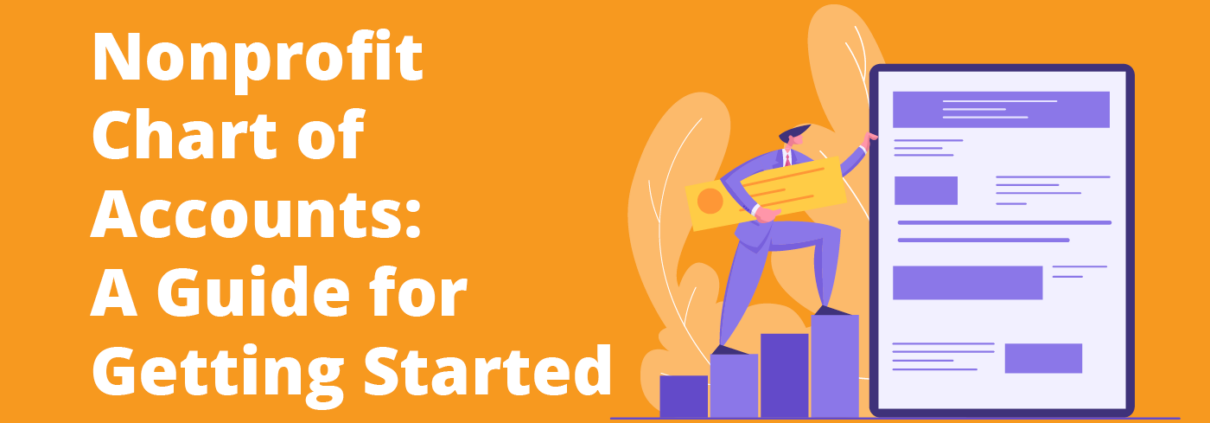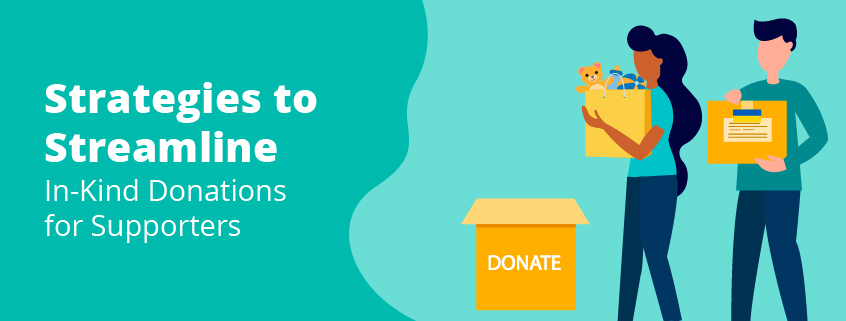Nonprofit Chart of Accounts: A Guide for Getting Started
Between the limitations of restricted funds and the need to continue fueling charitable missions, your nonprofit must keep organized data for a successful approach to accounting. A foundational tool for keeping organized finances is the nonprofit chart of accounts (COA), which is a resource that records your organization’s financial activity.
In this quick guide, we’ll explore how you can create a COA by covering the following topics:
- What is a nonprofit chart of accounts?
- How to create a nonprofit chart of accounts
- Best practices for maintaining your chart
As a nonprofit leader, you know that accurate financial records and reporting are crucial to maintaining your 501(c)(3) status. Let’s explore the basics of COAs so your organization can establish a system for reliable recordkeeping.
What is a nonprofit chart of accounts?
A nonprofit chart of accounts (COA) is a spreadsheet or table that lists an organization’s financial accounts and ledgers. This table is a directory of your nonprofit’s financial records, helping you organize important information about your finances. It is typically divided into five categories:
- Assets, or anything that your nonprofit owns.
- Liabilities, which include everything your nonprofit owes.
- Net assets, or the total amount your nonprofit is worth. This is calculated by subtracting your liabilities from your assets.
- Revenue, which consists of any funding your organization receives through its various income sources.
- Expenses, or all the expenditures your nonprofit incurs for its operations and fundraisers.
While it offers a broad overview of your finances rather than a deep dive into insightful metrics, your COA is the foundation upon which you’ll build reports that summarize your financial data, such as your:
- Statement of activities: Outlines your organization’s revenue, expenses, and net assets
- Statement of financial position: Indicates your nonprofit’s financial health by breaking down your assets, liabilities, and net assets
- Statement of functional expenses: Shows how your funding is used to fulfill your mission by dividing your expenditures into the categories of program, administrative, and fundraising costs
- Statement of cash flows: Reveals how cash moves in and out of your organization
According to Double the Donation, these financial statements are helpful when filing Form 990, which has a direct impact on your nonprofit’s ability to maintain tax exemption! In other words, your COA is an important tool for finding the information you need to file, as well as navigating financial records in case of an audit.
How to create a nonprofit chart of accounts
Every nonprofit’s finances are unique, and your chart of accounts will be, too. Although your chart must be organized in a way that makes sense for your organization, you can use the following steps to guide its development.
1. Determine your numbering convention.
A chart of accounts uses a numbering convention to identify certain categories of financial data. While your organization can use whatever system works best for your data, the numbers are usually organized as follows:
- 1000: Assets
- 2000: Liabilities
- 3000: Net assets
- 4000: Revenue
- 5000: Expenses
You’ll use this numbering system to categorize your financial data and then create subcategories to make your records as detailed as possible. For example, your subcategories might look something like this:
- 1100: Property
- 2100: Employee salaries
- 3100: Restricted net assets
- 4100: Event ticket revenue
- 5100: Fundraising expenses
Depending on the complexity of your budget, you may need to get more specific with each category. For example, money spent on donor recognition efforts may be lumped in with fundraising expenses or given its own category. Ultimately, it depends on how much your nonprofit gains and spends in a given category.
2. Fill in the account information.
Once you’ve determined how you’ll categorize financial data, it’s time to set up the document! List your financial activity according to your category numbers and their names. Place the account number in one column and its name in the next.
For example, your list of assets might look something like this:
- 1100: Checking
- 1200: Savings
- 1300: Investments
In the next column, you’ll list the main category for these records, which would be “Assets” in our example.
3. Add notes as necessary.
For extra transparency in your financial records, be sure to include a column for notes. This way, you’ll be able to look back on your spreadsheet and remember exactly what each account refers to.
For example, if your nonprofit relies on fundraising event revenue, it might be helpful to categorize fundraisers by event type and include a note for more details. This way, you’d be able to see that record 4200 refers to the revenue collected from product fundraisers specifically, rather than a lump amount of all fundraising revenue.
Best practices for maintaining your chart
After your nonprofit creates its chart of accounts, you need to maintain it over time to ensure it accurately reflects your changing financial activities and circumstances. To ensure you properly maintain this resource, employ the following best practices:
- Work with a nonprofit bookkeeper. Partner with an expert who can review your chart of accounts. Foundation Group’s bookkeeping guide recommends hiring a professional who has experience with nonprofit finances and a deep understanding of state and federal rules. This way, you’ll entrust this full-time job to an expert who can handle it.
- Keep your accounts simple. While your COA should offer ample detail to be easily navigable, it must also avoid becoming overwhelming. Group accounts where possible but divide them into more specific subcategories when necessary.
- Remove unused accounts from your chart. To ensure your chart is relevant and up-to-date, remove any unused or unnecessary accounts. For example, there’s no need to log a category for federal grants if your nonprofit doesn’t plan to apply for any.
Above all, remember to include room for growth in your COA. Your nonprofit’s finances will change over time, and the best way to account for that is to make the chart easily editable. Additionally, familiarize yourself with each account to avoid creating unnecessary ones when it’s time to log a new activity.
Many nonprofits start as a charitable mission with a few initiatives, then expand over time into an organized operation with a clear mission and fundraising approach. Naturally, your nonprofit’s finances can become increasingly complex as a result. With a COA, you’ll be able to stay organized with your accounting, ensuring you comply with nonprofit requirements.








